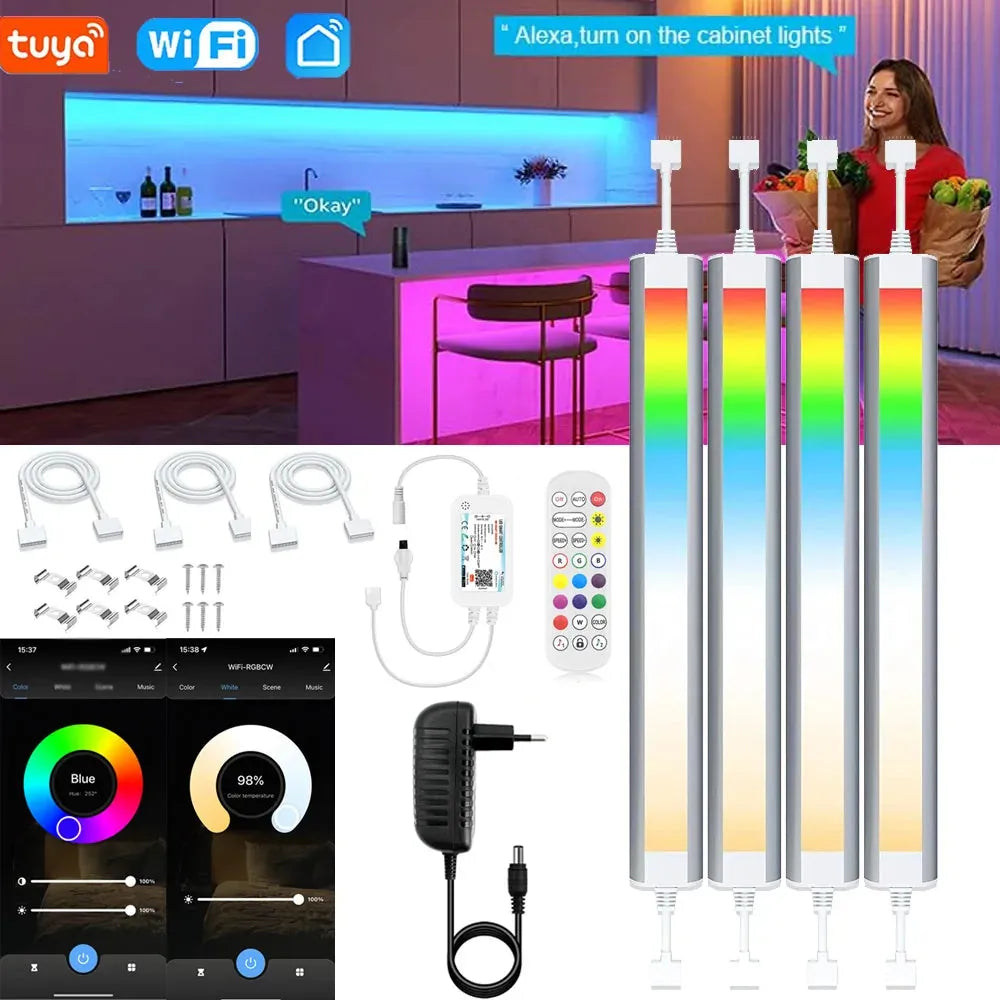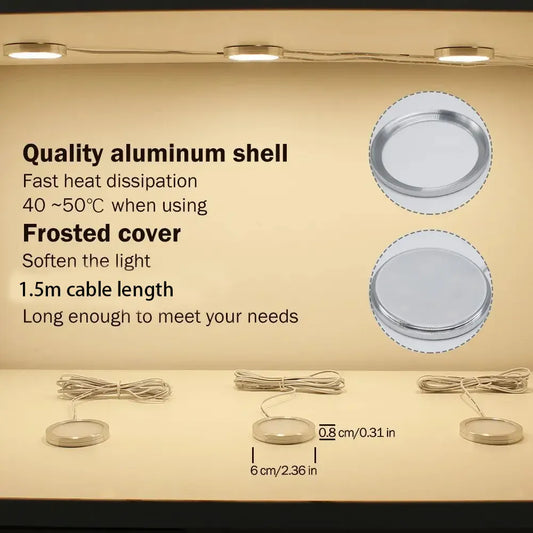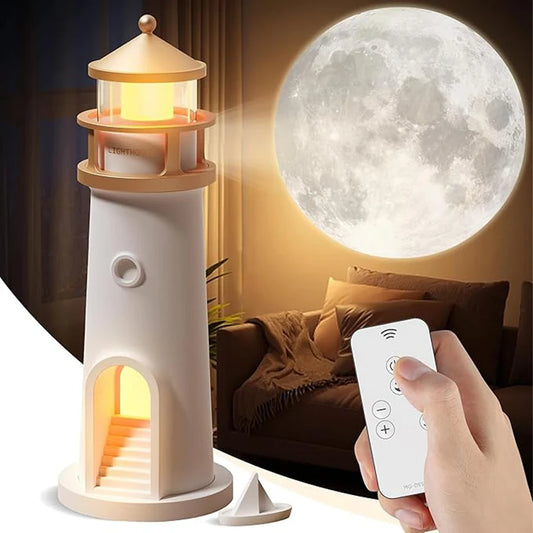
How to Choose the Best Under Cabinet Lighting for Your Kitchen
Share
Table of Contents
- Pros and Cons of Different Under Cabinet Lighting Types
- How to Choose the Best Under Cabinet Lighting
- Data Comparison of Under Cabinet Lighting Options
- Frequently Asked Questions (FAQs)
- Conclusion
Under cabinet lighting is an essential component of modern kitchen design, offering both functional and aesthetic benefits. It provides focused illumination, reducing shadows and enhancing the overall ambiance of your kitchen. This comprehensive guide will walk you through everything you need to know about choosing the best under cabinet lighting, from understanding the different types available to making an informed decision that suits your kitchen's needs.
For a complete guide on under cabinet lighting, please refer to: The Ultimate Guide to Under Cabinet Lighting.
Pros and Cons of Different Under Cabinet Lighting Types

Choosing the right type of kitchen under cabinet lighting is crucial for achieving the desired effect. Here are the most common options:
1. LED Strip Lights
- Description: Flexible strips of LEDs that can be cut to size and installed along the underside of cabinets.
-
Pros:
- Versatile and customizable
- Ideal for even light distribution
- Easy to install with adhesive backing
-
Cons:
- May require a transformer or driver
- Adhesive can weaken over time

Dimmable Under Cabinet COB LED Strip Lights with Hand Touch Motion Sensor Switch
2. LED Puck Lights
- Description: Small, round lights that provide focused illumination.
-
Pros:
- Easy to install
- Energy-efficient
- Perfect for highlighting specific areas
-
Cons:
- Limited coverage area
- Can create uneven lighting if not spaced correctly

3pcs Black RGB Battery Operated Under Cabinet LED Puck Lights with Remote
3. Linear Bar Lights
- Description: Rigid bars of LEDs that offer a continuous line of light.
-
Pros:
- Sleek design
- Efficient, uniform lighting
- Durable and long-lasting
-
Cons:
- More complex installation
- Less flexible in terms of placement compared to strip lights

Ultra-thin Touch Sensor Under Cabinet LED Light Bar for Kitchen Wardrobe Lighting
4. Rope Lights
- Description: Flexible tubes of LEDs used for decorative or functional lighting.
-
Pros:
- Flexible and easy to install
- Ideal for indirect lighting effects
-
Cons:
- Not as bright as other options
- Can be bulky and may not provide sufficient task lighting

Self-Adhesive COB LED Under Cabinet Lights Touch Dimmable Silica Gel Neon Tape Lights
5. Recessed Lights
- Description: Lights installed flush with the surface of the cabinet.
-
Pros:
- Discreet, modern look
- Excellent for ambient lighting
-
Cons:
- Requires professional installation
- More expensive and harder to replace or adjust
Further reading:
- Top Benefits of Using LED Light Bars for Under Cabinet Task Lighting
- LED Strip Lights vs. Linear Bar Lights: Which is Better for Under Cabinets?
- What Is The Difference Between A Strip Light And A Tape Light?
- Top 5 Energy-Efficient Under Cabinet Lighting Options
How to Choose the Best Under Cabinet Lighting

12V Tuya Wifi RGBCCT Under Cabinet LED Light Bar with Remote Control Dimmable For Kitchen
Selecting the right under cabinet lighting involves several considerations:
1. Determine the Purpose
Understanding the primary purpose of the lighting is essential:
- Task Lighting: For food preparation areas, choose bright, focused lights that eliminate shadows and provide clear visibility. LED strip lights or linear bar lights with a high lumen output (e.g., 500-700 lumens per foot) are ideal for this purpose.
- Ambient Lighting: To create a soft, inviting ambiance, select lights with a lower lumen output and warmer color temperature (e.g., 2700K-3000K). Rope lights or LED strips with dimmable features work well here, allowing you to adjust the brightness to suit different moods.
- Accent Lighting: Decorative lights highlight design features like backsplashes or glass-front cabinets. Puck lights or small LED spotlights with adjustable heads are perfect for directing light onto specific areas, enhancing visual appeal.
2. Evaluate the Space
Proper evaluation of the installation space is essential to achieve the desired lighting effect. Consider the following factors:
- Size and Layout: Measure the length and depth of the cabinets. For continuous lighting, LED strip lights can be cut to size and installed along the entire length of the cabinet. For smaller, specific areas, puck lights spaced evenly (8-12 inches apart) can provide targeted illumination.
- Color Temperature: The color temperature of the lighting should complement your kitchen design. Warmer temperatures (2700K-3000K) create a cozy atmosphere, while cooler temperatures (3500K-5000K) are better for task-oriented areas, offering brighter and crisper light.
- Power Source: Determine the most convenient and efficient power source. Plug-in options are easy to install but may have visible cords. Battery-operated lights offer flexibility but require frequent battery changes. Hardwired lights provide a seamless look and consistent power but require professional installation.
3. Consider Brightness and Energy Efficiency
- Brightness: The brightness of the lights, measured in lumens, should match the task requirements. For task lighting, aim for higher lumens (e.g., 400-500 lumens per foot). For ambient lighting, lower lumens (e.g., 150-300 lumens per foot) are sufficient.
- Energy Efficiency: LED lights are the most energy-efficient option, consuming up to 75% less energy than incandescent bulbs and lasting up to 25 times longer. Look for lights with high efficacy (lumens per watt) to ensure energy savings without compromising brightness.
4. Choose the Right Installation Type
- DIY Installations: For quick and easy setups, plug-in or battery-operated lights are ideal. They require minimal tools and can be installed in minutes. Adhesive-backed LED strips are particularly user-friendly, allowing for flexible placement.
- Professional Installations: For a more integrated and permanent solution, hardwired lights are the best choice. These installations require an electrician but offer a cleaner look with no visible wires. Hardwired LED bars or recessed lights provide robust and reliable illumination, enhancing the overall functionality of your kitchen.
5. Explore Additional Features
- Dimmability: Lights with dimmable features provide flexibility in brightness levels, allowing you to adjust the lighting according to your needs. Ensure compatibility with dimmer switches.
- CRI (Color Rendering Index): A higher CRI (90+) ensures that colors appear natural and vibrant under the light. This is particularly important in kitchens where accurate color representation is needed for food preparation.
- Smart Features: Consider lights with smart features, such as remote control, motion sensors, or integration with smart home systems. These features can enhance convenience and energy efficiency.
Further reading:
- What Wattage Should Under Cabinet Lights Be?
- Battery Operated Under Cabinet Lighting: Pros and Cons
- How Big Should Under Cabinet Lights Be?
- What is the Average Price of Under Cabinet Lighting?
Data Comparison of Under Cabinet Lighting Options

To provide a clearer comparison of different under cabinet lighting options, here is a data-driven chart that showcases key factors to consider, including brightness, energy efficiency, lifespan, and cost. This data is sourced from reputable institutions such as the U.S. Department of Energy (DOE) and the Illuminating Engineering Society (IES).
| Lighting Type | Brightness (Lumens per Foot) | Energy Efficiency (Lumens per Watt) | Average Lifespan (Hours) | Cost (per Foot) | Ease of Installation |
|---|---|---|---|---|---|
| LED Strip Lights | 500-700 | 80-100 | 25,000-50,000 | $10-$20 | Easy (Adhesive backing) |
| LED Puck Lights | 200-300 | 70-90 | 20,000-40,000 | $5-$15 | Moderate (Screw mounting) |
| Linear Bar Lights | 400-600 | 90-110 | 30,000-60,000 | $15-$30 | Complex (Hardwired) |
| Rope Lights | 150-300 | 60-80 | 10,000-30,000 | $8-$15 | Easy (Adhesive/Ties) |
| Recessed Lights | 400-600 | 80-100 | 30,000-50,000 | $20-$40 | Complex (Professional) |
Source: U.S. Department of Energy (DOE) and Illuminating Engineering Society (IES)
This chart helps illustrate the differences in performance and installation between various under cabinet lighting types, aiding you in making an informed decision for your kitchen lighting needs.
By carefully considering these factors and selecting the appropriate type of under cabinet lighting, you can enhance both the functionality and aesthetics of your kitchen, creating a well-lit and inviting space.
Frequently Asked Questions (FAQs)
Are LED strips good for kitchen under cabinet lighting?
Yes, LED strips are an excellent choice for kitchen under cabinet lighting. They offer several advantages including energy efficiency, long lifespan, and flexible installation. LED strips provide uniform, bright illumination, making them ideal for enhancing visibility and reducing shadows in kitchen workspaces. Additionally, they are available in various color temperatures and can be easily cut to size, allowing for customization to fit any cabinet length.
Further reading:
Is under cabinet lighting still popular?
Yes, under cabinet lighting remains popular due to its functional and aesthetic benefits. It enhances visibility and reduces shadows in kitchen workspaces, making tasks like cooking and food preparation safer and easier. Additionally, under cabinet lighting adds a sleek, modern look to kitchens, highlighting countertops and backsplashes. Its popularity is also driven by advancements in LED technology, offering energy efficiency, longevity, and versatile design options.
What are the disadvantages of under cabinet lighting?
Under cabinet lighting has some disadvantages, including:
- Installation Complexity: Hardwired options may require a professional electrician.
- Cost: High-quality lights and professional installation can be expensive.
- Maintenance: Bulb replacement and regular cleaning are necessary.
- Uneven Lighting: Can create hot spots or shadows if not properly installed.
- Compatibility Issues: Not all lights work with dimmer switches or available power sources.
Should under cabinet lighting be warm or cool?
Under cabinet lighting should be chosen based on the desired ambiance and functionality. Warm lighting (2700K-3000K) creates a cozy, inviting atmosphere and is ideal for general kitchen use and relaxing spaces. Cool lighting (3500K-5000K) provides bright, clear illumination, making it better for task-oriented areas where visibility is crucial, such as food preparation and cooking zones. Selecting the right color temperature depends on the specific needs and style of your kitchen.
For detailed insights, visit the article:
- The Best Color Temperature for Under Cabinet Lighting
- Is Soft White or Daylight Better for Kitchen?
- Should Under Cabinet Lighting Be 3000K or 4000K?
How many under cabinet LED lights do I need?
The number of under cabinet LED lights you need depends on the length of your cabinets and the type of lights used. For LED strip lights, measure the length of the cabinets and use strips that cover the entire length. For puck lights, place them 8-12 inches apart to ensure even illumination. Typically, you’ll need one puck light for every 12-18 inches of cabinet length. Adjust the number of lights based on your desired brightness and the specific layout of your kitchen.
For detailed insights, visit the article:
Conclusion
Choosing the best under cabinet lighting for your kitchen involves careful consideration of various factors, including the type of lighting, brightness, energy efficiency, and installation requirements. By evaluating your kitchen's layout and specific needs, you can select a lighting solution that not only enhances functionality but also elevates the aesthetic appeal of your space. Whether you're looking for task lighting, ambient lighting, or accent lighting, understanding these key aspects will guide you in making an informed decision that meets both your practical and design goals.
For a wide range of under cabinet lighting options, visit Lumaz and discover the perfect fit for your home. Explore our Under Cabinet Lighting Products here.




























 />
/>
 />
/>
 />
/>
 />
/>
 />
/>